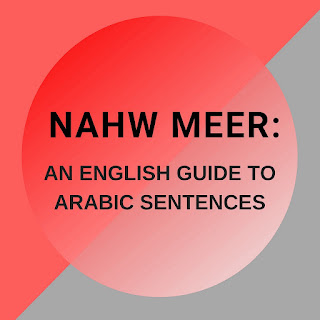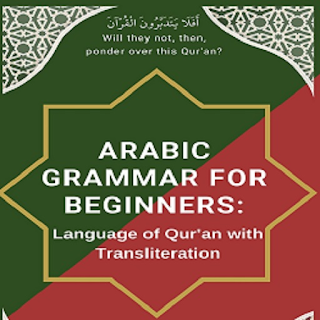9/11.0/11.1/11.2 - Basics of Irregular Nouns & Verbs/Irregular Nouns/Defective & Irregular Verbs
This is a fairly complex and advanced part of the Arabic grammar. Only a few basic rules and explanations will be provided so as to help the reader in understanding why Verbs are sometimes different from their root word.
The first alphabet in the Arabic alphabet, alif, is a weak alphabet that has two forms, a consonant form or hamzah ء and a vowel form ا (an extended alif). The vowel form can appear at the middle or the end of words, but never at the beginning.
This regular hamzah at the beginning of a word is called the "disconnecting hamzah - هَمْزَةُ القَطْعِ ham-za-tul qat-'ee. This is often an original alphabet and it must be pronounced always.
The other type of hamzah which lacks the sign ء is called the "connecting hamzah" هَمْزَةُ الوَصْلِ ham-za-tul was-li.
Section 11. 1 - Irregular Nouns
There are three irregular Nouns in Arabic. This happens when a vowel alif shows up at the end of a Noun:
1) Shortened Noun الاِسْمُ المَقْصُوْرُةُ al-is-mul maq-soo-ra-tu
2) Extended Noun الاِسْمُ الْمَمْدُوْدَةُ al-is-mulmam-doo-da-tu
3) Defective Noun الْمَنْقُوصُ الاِسْمُ al-is-mul-man-qoo-su
1) Shortened Noun الاِسْمُ المَقْصُوْرُةُ al-ismul maq-soo-ra-tu
If you see a long vowel alif (ا) at the end of Noun, it is not the original alphabet of the trilateral Noun. It has been substituted for either a و or a ي. The form ا substitutes for a waaw و and the form ى substitutes for a yaa ي
Shortened Nouns with more than three alphabets typically end with ى as in لَيْلٰىٰ Lai-la (female proper name), يَهْوٰىْ Yahwa (meaning he likes), مُسْتَشْفٰى mus-tash-faa (meaning hospital – masculine), دُنْيَاْ Dun-yaa (meaning world, feminine).
Nouns that end with extended alifs are called shortened Nouns because when an extended alif comes last in the word and it does not get full pronunciation, rather it will be shortened a small amount. For example:
| Root Alphabets | Root version which is not used | Actual used version | Meaning |
| ع ص و | عَصَوٌ asa-wun | عَصَاْ a-saa | A wand |
| ن د ي | نَدَيٌ na-da-yun | نَدًىْ nad-an | wet |
2) Extended Noun اَلْاِسْمُ الْمَمدُوْدَةُ al-is-mul mam-doo-da-tu
An extended Noun اَلْاِسْمُ االْمَمْدُوْدَةُ al-is-mul mam-doo-da-tu is a Noun which ends with a long vowel alif (ا) that is followed by a consonant alif ء, as in اْء.
These are called extended words because the presence of the (ء ) hamzah at their ends allows the extended alif (ا) to be fully pronounced; contrary to the case of shortened Nouns. Some examples:
| مَاْءُ | Maa’ | Water (masculine) |
| سمَاْءُ | Samaa’ | Heaven (feminine) |
| عَشَاْءُ | Ashaa’ | Supper (masculine) |
| صَحْرَاْءُ | Sahraa’ | Desert (feminine) |
| أَصْدِقَاْءُ | Asdiqaa’ | Friends (plural masculine) |
3) Defective Noun الْمَنْقُوصُ اَلاِسْمُ al-ism-ul man-qoos
A defective Noun الْمَنْقُوصُ اَلاِسْمُ l-ism-ul man-qoos is a Noun which ends with a long vowel يْ that is the original alphabet and belongs to the root. Proper names cannot be defective Nouns; and defective Nouns are always masculine unless a feminine taa ة were attached, or they were irregular plurals.
| Judge | Qaa’dee | قَاْضِيْ |
| Sponsor | Raa’ee | رَاْعِيْ |
| Attorney | Muhaa’mee | مُحَاْمِيْ |
| Snakes (plural female) | Afaa’ee | أَفَاْعِيْ |
The last original yaa of a defective Noun should be differentiated from the common attributive يَاُءٌ النِّسْبَتِيُّ yaa-un nis-ba-ti double yaa that comes also at the end of Nouns.
Section 11.2 – Defective and Irregular Verbs اَلْفْعْلُ الْغَيْرُ الْصَحيْحُ
If a three-alphabeted Verb in Arabic ends with a long vowel alif, that Verb is called a Defective verb اَلْفْعْلُ الْغَيْرُ الْصَّحيْحُ al-feil-ulghai-rus sahee-hu. Then, there are two other situations:
If the Verb has doubling of alphabets anywhere, it is called مُضَعَّفٌ mu-da-af, an irregular doubled Verb.
If the Verb has any of the weak alphabets (ي or و) then it is called an irregularly behaving weak Verb.
When any of these three situations occur (defective Verb, doubled Verb or weak Verb).as you will note later, situations are created in the inflections where the Verb is difficult to pronounce and is modified by native speakers for ease of pronouncing the Verb.
Defective Verb مَهمُوْزٌ mah-mooz-un
In mah-mooz, a trilateral root مُجَرَّدُ الثُلَاثِيْ mu-jar-ra-dul thu-laa-thi has hamzah (ا) in any of the three locations. These Verbs are called a مَهمُوْزٌ Mah-mooz. In addition, depending upon the alphabet location based on our فعل die (first location is Fa ف location, second location is 'Ain ع location and third location is laam ل location.
1) Alif in the beginning is called مَهمُوْزُ الْفَاءِ (mahmooz-ul-fa)
2) Alif in the middle is called مَهمُوْزُ الْعَيْنِ (mahmooz-ul-Ain)
3) Alif in the end is called مَهمُوْزُ الَّامِ (mahmooz-ul-laam)
Rules and Examples for Mahmooz
In general, mahmooz-ul-fa encounters more of the situations where changes have to be made in the Verb. Following Rules apply:
1) If two hamzahs are next to each other, which can happen in speaker imperfect tense of a mahmooz and the first hamzah has a harakah on it ( َ , ُ , ِ ) and the second one is saakin/jazm (ْ ) then, second hamzah is forced to change to the alphabet matching the alphabet. for first hamzah harakah (Alif for fathah, yaa for kasrah and waaw for dammah). For example:
- Let us take the words أَمَرَ/يَأْمُرُ aa-ma-ra/ ya-mu-ru meaning he ordered/he is ordering or he will order. The speaker for يَأْمُرُ yaa-mu-ru would be اَأْمُرُ. The two hamzahs together according to the rule would be:
اَ+أْمُرُ = اٰمُرُ aa-mu-ru
- Another example would be aa-ka-la/yaa-kulu أَكَلَ/يَأْكُلُ. The speaker (1stperson) inflection for يَأْكُلُ would be اَأْكُلُ. According to the rule, this would be:
اَ+أْكُلُ = اٰكُلُ aa-ku-lu
2) If there is a hamzah which is a saakin/jazm (ْ) and there is another alphabet other than a hamzah and has a harakah on it, then, the saakin/jazm hamzah is converted to an alphabet matching the that harakah. For example,
- دَعَوَ da-aa-wa becomes da-aa دَعَاْ
- رَمَيَ ra-ma-ya becomes ra-maa رَمِى
- رَأْسٌ ra-a-sun becomes raa-sun رَاسٌ
- ذَئِبٌ za-i-bun becomes Zai-bun ذَيْبٌ
- مُؤْمِنٌ mu’mi-nun becomes mu’mi-nun مُوْمِنٌ
For mahmooz, this change happens only in the speaker (1st person) inflection.
As mentioned before for a Noun, if you see a long vowel alif (ا) at the end of a Verb, it is not the original alphabet of the trilateral Verb. It has been substituted for either a و or a ي as shown in examples below:
- دَعَاْ da-aa a was originally دَعَوَ da-aa-wa meaning call/ask
- رَمَىْ ra-maa a was originally رَمَيَ rama-yaa meaning to throw
3) All Particles ending in vowel alif will also end with the form ا except for the following four Particles:
إِلٰى i-laa meaning toward/to
عَلٰى alaa meaning over/on
بَلٰى balaa meaning Yes
حَتّٰى hat-taa meaning Until





Comments